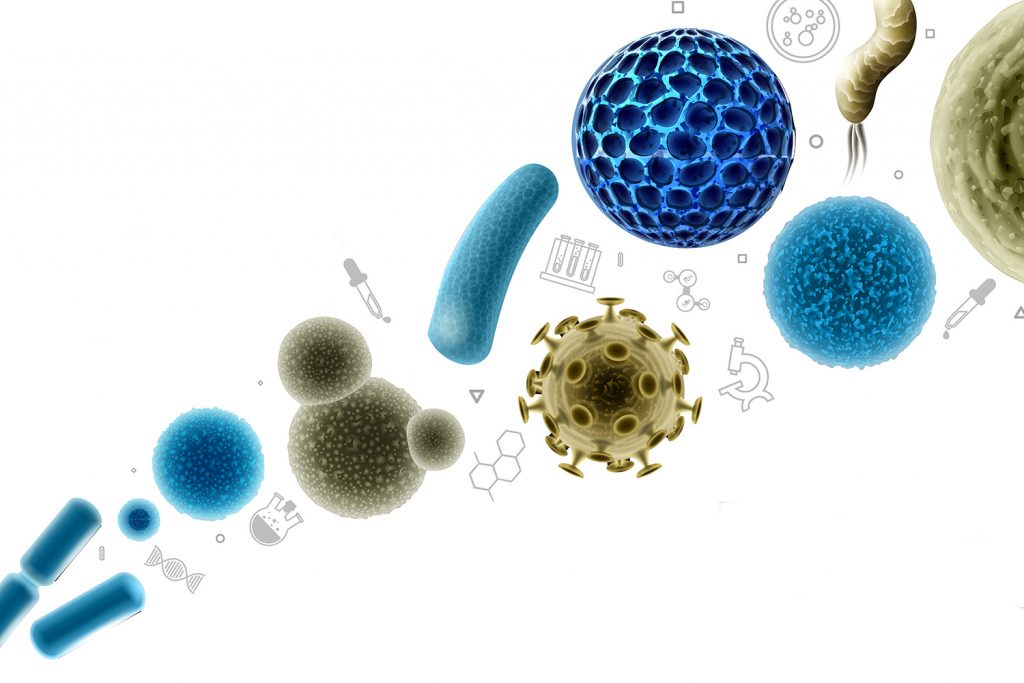06 Jul Wet litter? It may be due to dysbiosis

Dysbiosis, also called dysbacteriosis or bacterial enteritis, is a poultry disease that entails a disruption in the composition of gut microbiota together with intestinal inflammation.
The disease is poorly understood and difficult to study, but it’s widespread and it is said to affect more than 50% of the farms, especially in countries that ban antibiotic growth promoters. It is more common in birds after 20 days of age.
During dysbiosis, there is an overgrowth of microbial species that in normal conditions are a minority. As a result, the immune system increases antibody and mucin secretion to control such population shift, inflammation appears, and the gut barrier becomes more permeable.
The immune reaction associated to dysbiosis diverts energy and protein production from growth and normal physiological processes towards the immune response, that’s why dysbiosis is linked to poorer weight at slaughter and low profitability.
Common signs
Dysbiosis does not have identifying lesions nor characteristic pathological signs, and it is often confused with coccidiosis and necrotic enteritis, leading to the unnecessary use of antibiotics or anticoccidials.
Its main sign is the presence of wet litter, which can in turn lead to footpad dermatitis, breast blisters and poor air quality.
External signs
- Feces are wet, greasy or orange
- Increase in water intake
- Feed intake is not increasing when it should be
- In numerous instances, but not all, dysbiosis is linked to decreased feed conversion, decreased body weight, and poor general performance
- Not all the animals of the flock are affected, leading to poor uniformity
Signs on necropsy
- The intestine is inflamed and swollen like a balloon, with dilated blood vessels and a thin, flaccid, intestinal wall
- Foamy and watery intestinal contents
- Undigested residues of feed may be visible in the intestinal content, especially in distal segments of the intestines, and the feces.
Not all the signs described above are present in the affected birds. There is a scoring system, developed by Dr. Hilde Van Meirhaeghe from Vetworks, that helps to assess how likely the signs we observe in the farm are due to dysbacteriosis.
Causes
- Feeding errors and substantial dietary changes (i.e. change from a low protein diet to high protein), low quality feed ingredients and poor feed hygiene
- Presence of mycotoxins in feed
- Poor management or environmental conditions
- Bad hygiene in the farm
- Subclinical coccidiosis
- Antibiotic abuse
- Poor functioning of the glands that secrete HCL in proventriculus, due to mycotoxicosis or other diseases. Gastric acidity in gizzard is the first line of defense against pathogens
- Stress.
Prevention and treatment
The most effective prevention strategy is to ensure gut health with a holistic approach that includes measures related to:
- Quality of day-one-chicks
- Feed quality and composition, paying attention to microbial and mycotoxin contamination, rancid fats, anti-nutritional factors, and adding enzymes if necessary
- Quality of drinking water
- Good coccidiosis control program
- Strict hygiene and biosafety
- Good ventilation, in order to reduce the risk of wet litter
This multi-departmental plan could includes the substitution of antibiotic growth promoters with products based on plant extracts, such as PlusProtect Digestive© or GrowthPlus© to control pathogenic flora. Also, mycotoxin binders with the special ability to bind trichothecenes should be used to keep intestinal tissues healthy.
At the onset of the disease, antibiotics may not be helpful because there is not a single specie of bacteria causing the disease. Prebiotic plant extracts combined with microbicide phytogenics help to restore the balance of microflora. Some phytogenics also have anti-inflammatory effects, helping to reduce the inflammation associated with dysbiosis.
Products of choice
DigestoCid© has a broader spectrum of action than products based solely on organic acids, allowing superior antibacterial and antifungal efficacy at a less acidic pH (5.5-6.5).
GrowthPlus© is added to feed to maintain and improve digestive health. It is formulated with synergistic ingredients:
- Bactericidal and fungicidal plant extracts, combined with organic acids for better effectiveness, that reduce the number of pathogenic microbes in the digestive system.
- Plant extracts with prebiotic effect, that promote the growth of beneficial bacteria in the gut.
- Immunostimulant and antioxidant plant extracts.
- Silicates with mycotoxin binding function.
It is especially useful in cases of gizzard diseases, necrotic enteritis, feed passage and other enteritis. It is also used as a natural growth promoter and to replace antibiotic growth promoters.
PlusProtect Digestive© is intended for digestive health in birds and rabbits of all ages. It is formulated with synergistic ingredients:
- Essential oils with bactericidal and fungicidal activity
- Plant extracts with prebiotic effect.
- Immunostimulant and antioxidant essential oils
PlusProtect Digestive© is useful to improve gut health in the following cases:
- Candidiasis in beak, crop and gizzard
- Bacterial infections in gizzard. In severe cases, it is better to give together with our PlusBind© line (mycotoxin binders)
- Bacterial infections in the intestines (necrotic enteritis; E.coli; Salmonella sp.)
- General digestive imbalances, such as feed passage.
BioShield© is a complete solution that protects your animals against toxicity by mycotoxins. It includes:
- Broad spectrum mycotoxin protection (silicates with mycotoxin binding function)
- Phytogenics that preserve liver health, safeguard gut health and activate the immune system.
PlusBind© is a mixture of carefully selected silicates intended for the prevention of diseases and productivity losses related to the presence of all types of mycotoxins. It is indicated in poultry, pigs, aquaculture and ruminants.
The silicates present in PlusBind© have a highly expandable molecular structure. This characteristic gives the product a wide surface available for the adsorption of mycotoxins and therefore allows a high effectiveness at lower doses (0.5-1 kg per ton of feed).
PlusBind Bio© is a mixture of carefully selected silicates intended for the prevention of diseases and productivity losses related to the presence of all types of mycotoxins. It also contains plant extracts with prebiotic effect.
It is indicated in poultry, pigs and aquaculture.
The silicates present in PlusBind Bio© have a highly expandable molecular structure. This characteristic gives the product a wide surface available for the adsorption of mycotoxins and therefore allows a high effectiveness at lower doses (0.5-1 kg per ton of feed).
Picture found here.
Do not miss any of our articles!
Subscribe to our monthly newsletter

Certain health statements may not be applicable in your region.

